Although a sightseer will find something or the other as a treat to her eyes in almost every nook and corner of this vast country, in this article, we have mentioned the top tourist attractions in India which are sure to bring an element of excitement if you are traveling to India from overseas.
Discovering the Best 51 Tourist Attractions in India
Taj Mahal, Agra
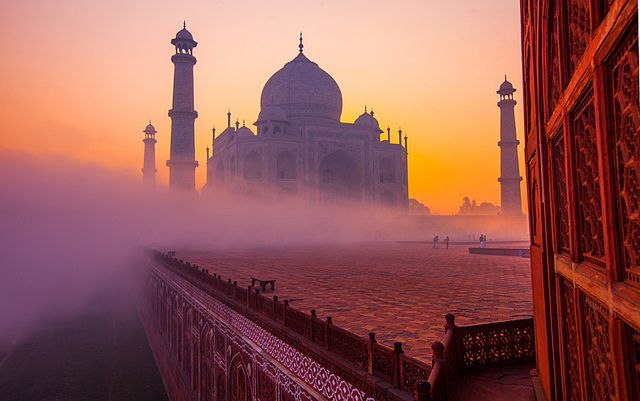
A token of eternal love and a symbol of undying affection, the Taj Mahal built by the 5th Mughal Emperor Shah Jahan upon the death of his most beloved and favorite wife definitely tops the chart when it comes to top tourist attractions in India. Nominated time and again as one of the 7 wonders of the world, the Taj has unquestionably remained one of the most popular destinations with visitors coming to India.
[Browse through our Agra tour packages]
Ajanta Caves, Aurangabad

The Ajanta are the majestic, about 30 odd rock-cut Buddhist caves that date back from about the 2nd century BCE to about 480 CE. Providing a glimpse into the pristine Buddhist Art including paintings, sculptures, and various other depictions, these caves are now a UNESCO World Heritage site and remain one of the top attractions to be visited by tourists from around the world.
[Browse through our Maharashtra tour packages]
Golden Temple, Amritsar

The seat of the Sikh religious and temporal authority, The Golden Temple is the holiest of the shrines of Sikhism. Its religious significance notwithstanding, the Temple is also one of the most beautiful structures in India, being situated in the midst of a reservoir connected by a single path. At almost all times, it is buzzing with pilgrims and tourists. One can have a closer look at the essence of the religion and conduct of Sikhs while paying a visit here.
[Plan your pilgrimage to Golden Temple with our Amritsar tour packages]
Humayun’s Tomb, Delhi
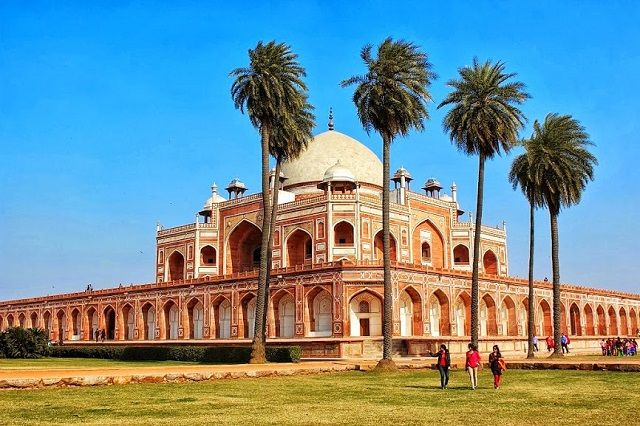
The tomb is a fragment of an architectural masterpiece, built after the Persian design. The building structure houses the remains of the second Mughal Emperor Humayun, who died in Delhi after falling from the steps of his library, besides bearing the tombs of several other Mughal princes and later kings. It is surrounded by beautiful gardens in the Persian Charbagh style and offers a great ambiance, reminiscent of the times of a great era.
[Browse through our Delhi tour packages to plan your trip]
Hawa Mahal, Jaipur

Hawa Mahal (literally meaning the palace of winds in Hindi), is an engineering marvel located in the Western-Indian city of Jaipur. It was commissioned and built by Maharaja Sawai Pratap Singh in the year 1799 as a high-wall screen so that the women of the palace could enjoy the street activities, without actually being seen themselves. It has been built in such a manner that the blazing hot air of Jaipur is broken due to the intricately carved windows, providing a sort of air-conditioning effect.
[Browse through our Jaipur tour packages to plan your trip]
Brihadeeshwarar Temple, Thanjavur
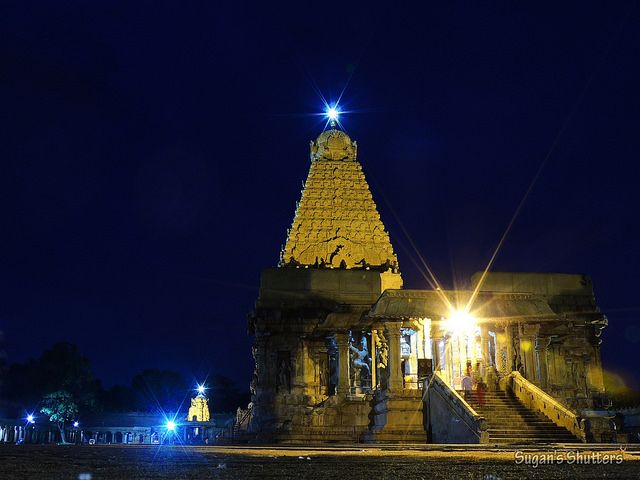
A true illustration of the rich and prosperous heritage of the South, The Brihadeeshwarar Temple is one of the largest and most exceptional temples in India. The temple was constructed during the early medieval times, during the effervescence of Shaivaite Hinduism in the South under the reign of the powerful Chola kings. Another one of the most frequented destinations visited by tourists, the temple is a UNESCO World Heritage site.
[Browse through our Hyderabad tour packages]
Fatehpur Sikri, Uttar Pradesh
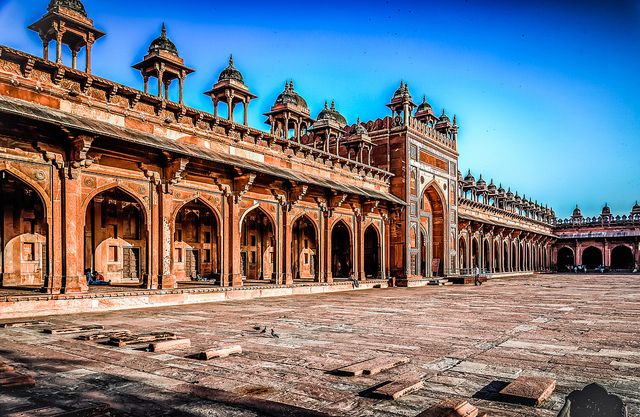
Characterizing the identity and personality of Mughal Emperor Akbar, The Fatehpur Sikri is a sprawling walled city that served as the Mughal capital from 1571 to 1585. The site was initially chosen by the emperor enveloping the hospice of a Sufi saint who blessed Akbar as an heir.
The Fatehpur complex incorporates a number of beautiful buildings that give a view of the distinct red sandstone architecture prevailing at that time, however, the grand Buland Darwaza, Diwan-Khaas(hall of private audience) and dargah (the tomb of the Sufi Saint), remains highlight with the tourists.
Red Fort, Delhi
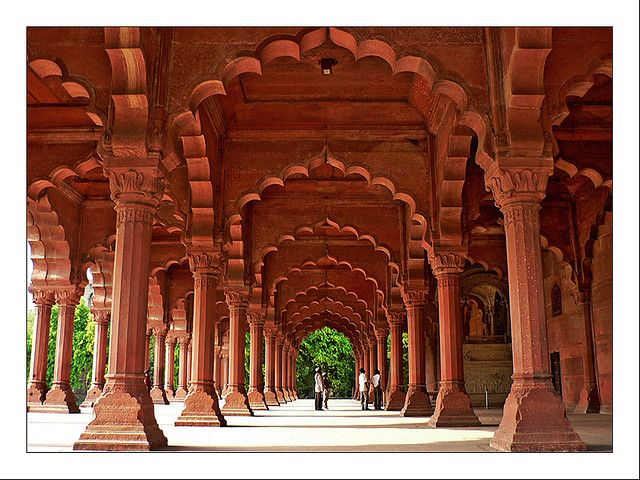
Situated right in the heart of Delhi, the Red Fort symbolizes the splendor of the Mughal Empire at its height. Constructed as the residence palace by Emperor Shah Jahan in the year 1648, the Red Fort then served as the habitation for later Mughals till the final fall of the Empire in the year 1857. The palace complex has a number of buildings including Diwan-e-Aam (hall of public audience), Diwan-e-Khaas(hall of private audience), and Moti Masjid(Pearl Mosque)that speaks of the grandeur and magnificence of a bygone era.
The fort is a UNESCO World Heritage site and assumes national importance in the sense that the Prime Minister of India delivers a speech to the nation every year from one of its ramparts on the occasion of Independence Day of the country.
Meenakshi Amman Temple, Madurai
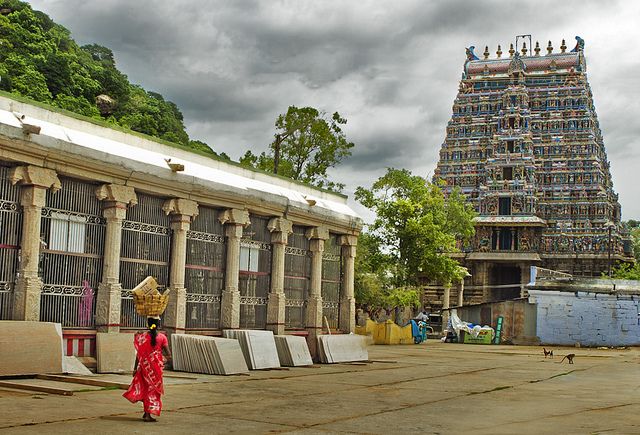
This majestically raised structure with a grand layout, this majestic temple in Madurai is a symbol of a construction genius with its minutely carved edifice and one of the top tourist attractions in India.
The temple is dedicated to the Hindu Goddess Parvati and its concept is based on a Hindu legend, involving the birth, reincarnation, and marriage of the Goddess herself. With its rich design, the temple represents the irresistible allure of the profuse Hindu heritage.
[Plan your temple tour in South India with our Madurai tour packages]
Konark Sun Temple, Odisha
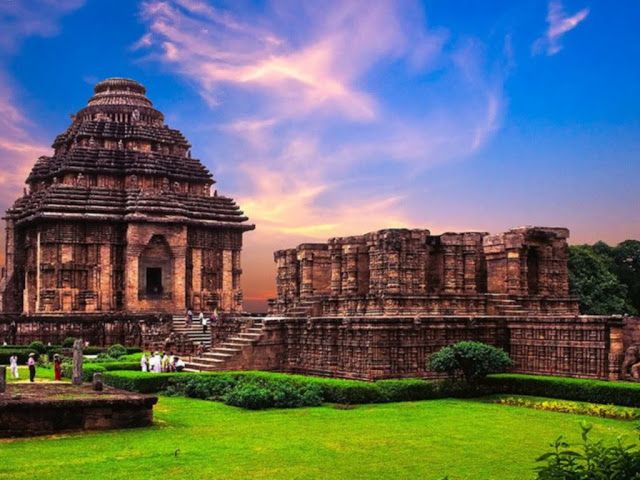
This 13th-century massive structure is another one of a photographer’s delight. The Konark Sun Temple, apart from being declared a World Heritage site by UNESCO, has remained one of the cornerstones of tourist destinations in India.
It has a unique structure, which has been designed in the form of a chariot together with wheels, walls, and pillars. Its wide scope along with its elaborate carving is a major visitor attraction.
Basilica of Bom Jesus, Goa
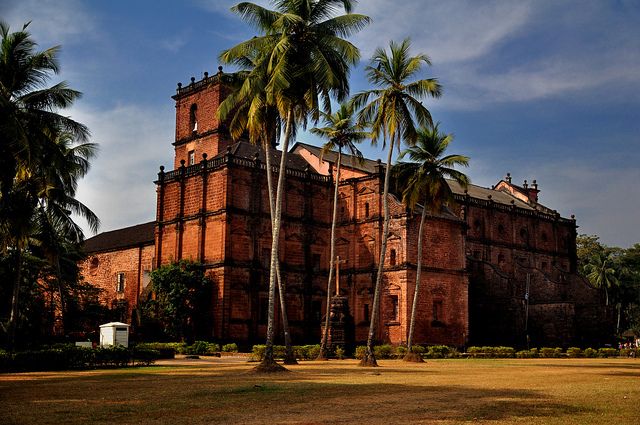
Laid out with impeccable Renaissance architecture, The Basilica of Bom Jesus carries the tomb and mortal remains of the Apostle of the Indies, St. Francis Xavier, who died somewhere around the middle of the 16th century. The Basilica of Bom Jesus is a well-known structure throughout the Roman Catholic world.
The Basilica houses a finely carved central pediment, which bears the famous Jesuit emblem of IHS, besides some other remarkable ornamentation of the Baroque era, with a plain, classical background.
Every year the feast of St. Francis is organized on 3rd December, which is preceded by a 9-day novena during which there is a huge gathering and every 10 years the body of St. Xavier is taken out and hauled around Goa, amidst thousands of pilgrims and tourists. The building continues to be very popular with the tourists hopping to the beach county.
[Plan your trip to the tiny emerald with our Goa tour packages or view hotels to book your stay in Goa]
Gateway of India, Mumbai
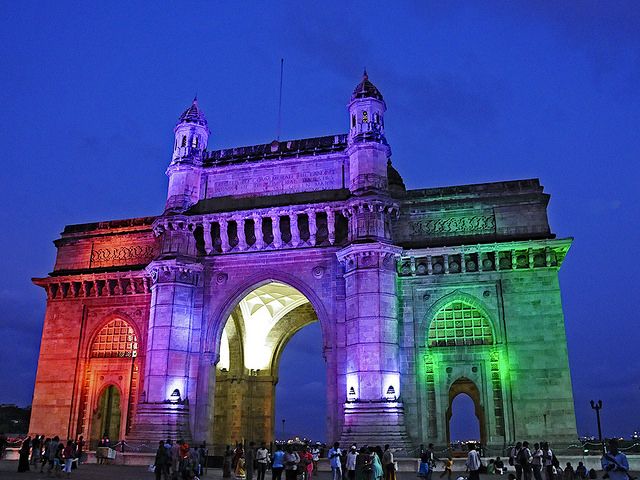
Built in 1924, during British Rule, this iconic monument commissioned to commemorate the arrival of King George V and Queen Mary is one of the central tourist destinations in the Indian port city of Mumbai. The Gateway is situated at the end of the Apollo Bunder which overlooks the Arabian Sea.
The site is also popular with the locals as many come here in the evening to take in the cool air. Tourists will find many local vendors selling their items from eatables to little engaging stuff among the crowd. The monument faces the famous Taj Hotel, which was the center of the infamous 2008, terrorist attack in the city.
[Plan your trip to the ‘City of Dreams’ with our Mumbai tour packages]
Rani ka Vav, Patan, Gujarat
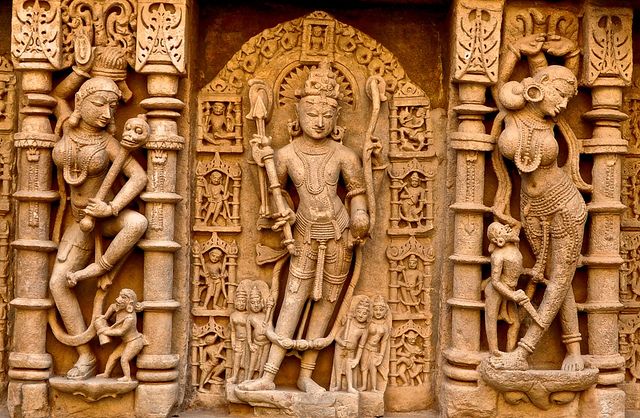
Identified with some of the most intricate designs and minute carvings, Rani ka Vav is a stunningly beautiful construction situated in the city of Patan in Gujarat. The building is divided into seven levels of stairs with sculptural panels of a high artistic character on the walls. It was initially constructed in memory of a king who ruled Gujarat somewhere around the 11th century AD.
It is actually designed as a well-built after the ancient Hindu style of water storage. Rani ka Vav is a must-visit for anyone interested in the historical legends of early medieval Hindu Royal families and to see for themselves, the flourishing and distinct style of architecture, characteristic of those times.
[Explore the architectural heritage of Gujarat with our tastefully crafted tour packages]
Charminar, Hyderabad

Located at one of the major busy squares of the city of Hyderabad, the Charminar is a medieval Islamic monument that is also used as a mosque. The icon is representative of a thriving culture of Deccani Sultanates especially the Qutub Shahi dynasty that ruled sometime around the end of the 16th century. The picturesque monument has Persian elements in its design and is punctuated by finely carved patterns that add a major charm to its beauty.
Agra Fort
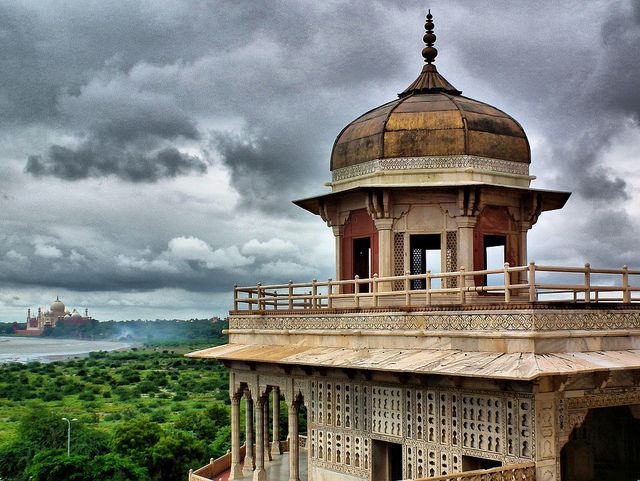
One of the major structures after the Taj Mahal, evocative of the glorious era of the Mughals and their times is the Agra Fort. Agra remained a seat of power for many dynasties and the fort continuously changed hands between the Mughals and their contenders.
But it was developed principally by the Mughals with successive generations evolving and expanding as per their tastes and temperament. Thus, one may find red sandstone structures of Akbar to white marble motifs and designs by Shah Jahan. The fort continues to remain popular with the visitors to Agra.
Group of Monuments, Qutb Minar, Delhi

Standing 73 meters tall, the Qutub Minar symbolizes the beginning of the establishment of Islamic empires in India. The monument was built over a period of time and by different sultans (kings) of Delhi starting from the year 1199 AD.
There are several other monuments that are situated around Qutub Minar, most notably the Quwwat-Ul-Islam mosque, the Iron Pillar, The tomb of Iltumish, Alai Darwaza, etc. each having their own respective histories. The place is a UNESCO world heritage site and a must-visit for anyone going to Delhi.
[Also read our complete Delhi Travel Guide]
Amber Fort, Jaipur

The Amber Fort is a major icon of Rajasthani monuments, forts, and palaces. Aesthetically designed and styled, it represents a characteristically Hindu form of architecture as opposed to the Muslim style found in other forts and palaces built by Muslim rulers. With its wide ramparts, a series of gates, and paths, it has an ambiance typical of the Rajput way of life with small palaces and open courtyards, lattice screens, ponds, etc.
The tourists will be drawn to the remarkable Rajput history and together with the overall surroundings will find the experience to be amazing.
Golconda Fort, Hyderabad
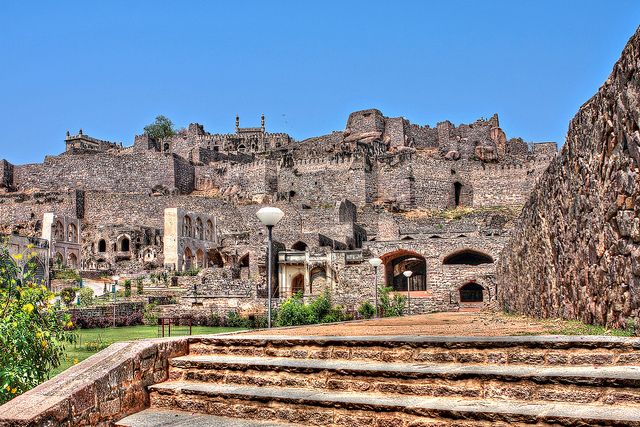
Golconda (literally meaning “Shepherd’s Hill”) fort is a hill fortress that was the capital of the rich and prosperous kingdom of Golconda during medieval times. The fort was initially under the Hindu Kakatiyas dynasty before it was annexed into the Islamic Bahmani Kingdom. Later, after a brief administration of the Mughals, it remained under the famous Qutub Shahis and Nizam Shahi dynasties well into the year 1948 when Hyderabad was appended into the newly independent Indian Union.
The fort during its high point was considered to be impregnable. It is also a wonderful example of an engineering marvel with its incredible acoustic effects which was designed to alert the royals in times of a siege or an attack.
[Explore Hyderabad tour packages to plan your trip]
Sanchi Stupa, Madhya Pradesh
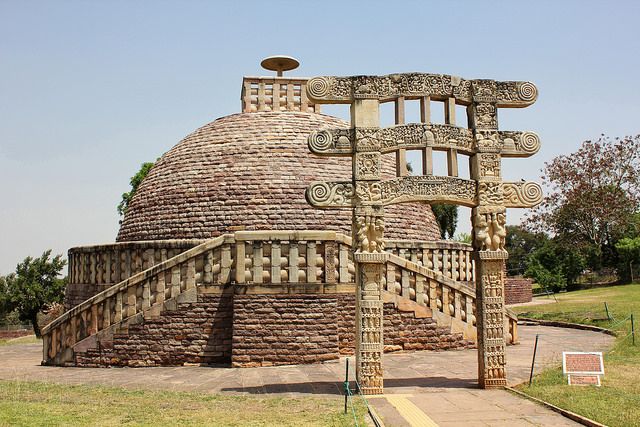
The famous icon of Buddhism, The Sanchi Stupa was commissioned and started by Emperor Asoka, around the 3rd century BCE. It remains to be the oldest stone structure in India. It is believed that The Sanchi Stupa contains the relics and remains of Buddha.
The initial brick and dome structure was appended by later rulers, particularly those of the Sunga dynasty who succeeded the Mauryans. The building is punctuated by beautiful gates and pillars that either contain the inscriptions by the emperor or depict the life and times of Buddha
[Browse through our Madhya Pradesh tour packages]
Lake Palace, Udaipur
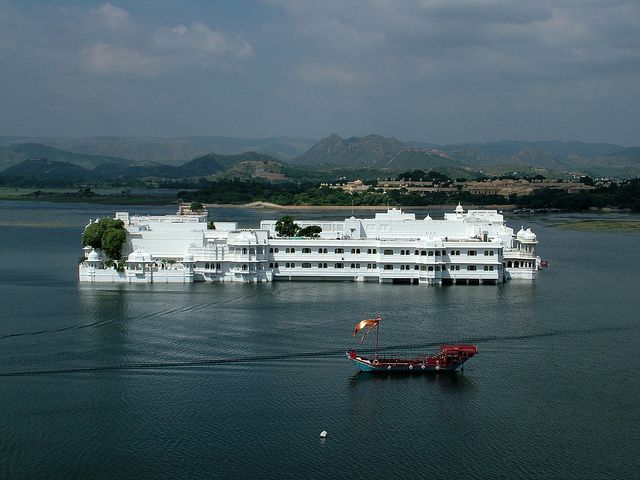
Labeled to be one of the most romantic places on Earth, The Lake Palace in Udaipur is a whole lot of worlds apart with its stunning views and almost mythical interiors as well as the exteriors. The palace was initially constructed by Maharana Jagat Singh between 1743 and 1746 as a site for a summer retreat for the royal family.
Later, when the Royalty was abolished in independent India, it was transformed into a sprawling hotel for visitors who wanted to experience the lofty and elitist way of life of the Rajput aristocracy. The palace is found to be high on the list of travelers who visit Rajasthan to experience its unique culture.
Mahabodhi Temple, Bodhgaya
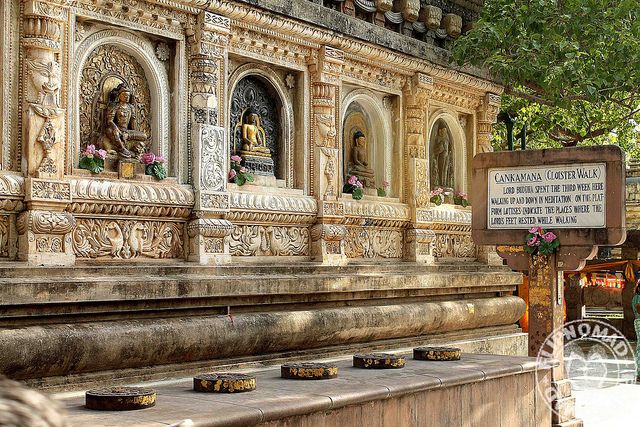
The Mahabodhi Temple in Bodhgaya marks the exact spot where Buddha attained enlightenment around 530 BC. Subsequently, Emperor Asoka built the temple designating the place, to the east of the legendary Mahabodhi tree in around 260 BC. The Mahabodhi Temple is said to be one of the oldest brick structures that has survived in the eastern part of India.
The temple has beautiful architecture and is surrounded by stone railings that bear the images of Hindu Gods and Goddesses. Due to its religious, historical, and architectural importance, the temple has been declared a UNESCO World Heritage site and is visited by many tourists from around the globe.
[Embark on the quest for enlightenment and spirituality with our Bodhgaya tour packages]
Tomb of Itmad-Ud Daula, Agra

One of the many exquisite buildings of the Mughal era and one of the first to be built entirely from marble, the tomb of Itmad-Ud-Daula is regarded by many to be better than the Taj. Itmad-Ud-Daula was a Persian Amir, the prime minister of Emperor Jahangir, and the father of his most beloved wife Nur-Jahan. She built the tomb for her father in the same style as she built it for her husband in Lahore.
The structure is known for its delicate design, interspersed with elegantly carved marble lattice screens, with extensive use of fine stone mosaic work. It is frequently added to the itinerary of the tourists visiting the Mughal Cultural city of Agra.
Jain Temple, Ranakpur

Considered to be one of the main pilgrimage centers for the Jains, the temple at Ranakpur is an artistic jewel from the point of view of architecture. Built entirely from light-colored marble, the temple is spread over a sprawling 48000 sq feet. More than 1400 beautifully carved pillars support the massive structures with 80 domes and 400 columns that change color every hour from gold to pale blue. The temple is however situated in a village but is well connected by buses from the nearby town Udaipur.
[Browse through Udaipur tour packages to plan your trip to Ranakpur]
Dashwamedha Ghat, Varanasi
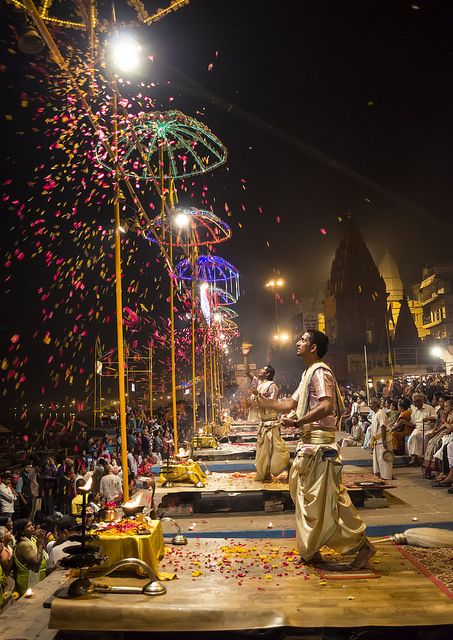
Associated with some of the most spectacular and majestic views of Hindu rituals and ways of worship, the Dashwamedha Ghat (Literally “bank of a river”) furnishes a breathtaking instance of cultural richness of one of the holiest cities of Hindu religion.
The real draw of the place is however the famous Ganga Aarti( or invocation to river Ganges) that attracts hundreds of visitors every evening, when the priests perform the ritual of lighting thousands of earthen lamps, which are then immersed in the river.
The wonderful scene is correspondingly punctuated by people chanting Vedic hymns in praise of their Lord and the sound of thousands of bells, cymbals, conch shells, etc. to support the worship.
[Browse through our complete Varanasi travel guide]
Ellora Caves, Maharashtra
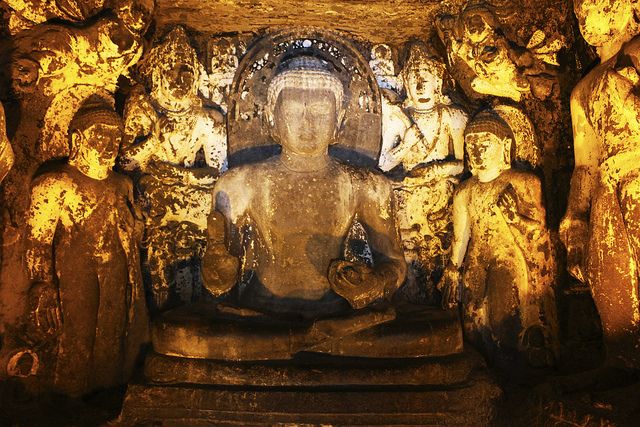
The Ellora caves are one of the largest rock-cut monastic temple caves in the entire world. The beautifully carved structures are a splendid example of religious harmony for they bear monuments of Brahmin, Buddhist, and Jain beliefs and bring to life the glorious civilizational traditions of ancient India.
These caves are monasteries and temples, extend to about 2kms and are created out of a high basalt hill. The Ellora caves can be easily reached by Bus from the city of Aurangabad which is well connected by road, rail, and airways from major towns of India like Mumbai, Hyderabad, Amritsar, and Delhi.
Khajuraho Group of Monuments, Madhya Pradesh
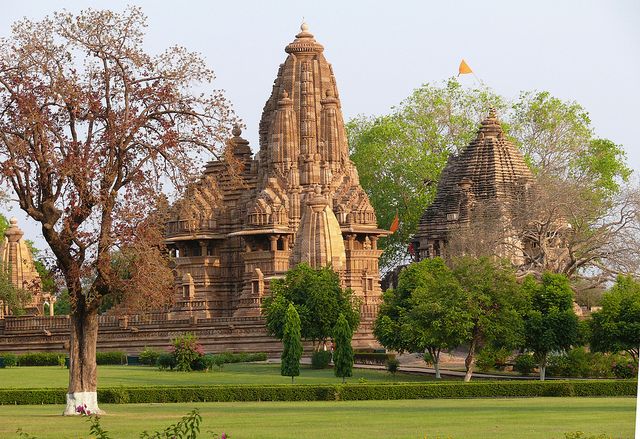
These exotic structures are a group of Hindu and Jain temples that were built around the 12th century AD by the Hindu Chandela dynasty and are world-famous for their beautiful architecture and various erotic sculptures. Many of the non-sexual figures carved on the temple walls depict Hindu gods and Goddesses and are based on a number of legends that portray events related to these.
The temple complex offers a number of attractions for tourists which include a light and sound show that narrates about the temple history and architecture. Moreover, a special festival called the Khajuraho Dance Festival is held every February and features various Indian classical dances.
[Browse through our Kjajuraho tour packages to plan your trip]
Akshardham Temple, Delhi
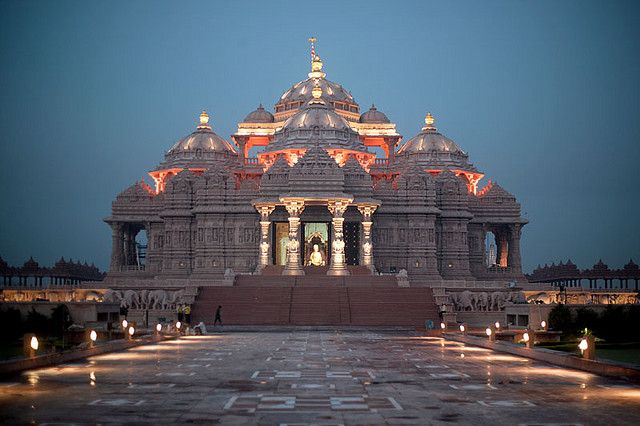
A colossal structure of breathtaking splendor, The Akshardham Temple in New Delhi is a sublime instance of cumulative refinement of Indian Art, architecture, and heritage. It is located near the banks of river Yamuna and is built almost entirely of stone. With its fine carvings, expansive scope, and beautiful ambiance, the temple draws a huge number of tourists who come to Delhi.
The complex also organizes a number of exhibitions like the robotic show, Musical Fountain, and a Giant Screen Film through which they try to illustrate the ideals of honesty, and harmony. Non-violence and spirituality.
Read more about Akshardham Temple
Victoria Memorial, Kolkata
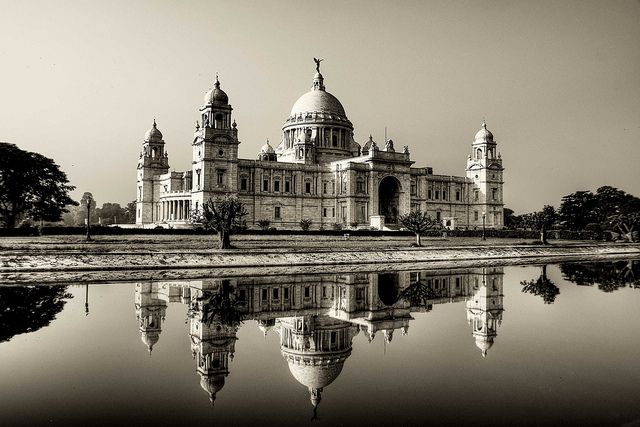
True to its name, the Victoria Memorial was commissioned and built in memory of Queen Victoria at her passing away in the year 1901. Designed by the eminent architect William Emerson, The Victoria Memorial incorporates principally Indo-Saracenic and Mughal styles but also has Venetian, Egyptian, Islamic, and Deccani styles of architecture.
The sprawling and expansive structure is surrounded by lush gardens and the building itself is a museum that houses various memorabilia connected to the British Empire, including paintings, weapons, coins, artifacts, etc. that epitomize the height of the British domination during the beginning of the 20th century. It is one of the major attractions of the erstwhile British capital of Kolkata. Read more
[Also check out our Kolkata tour packages to plan your trip to the ‘City of Joy’]
India Gate, Delhi
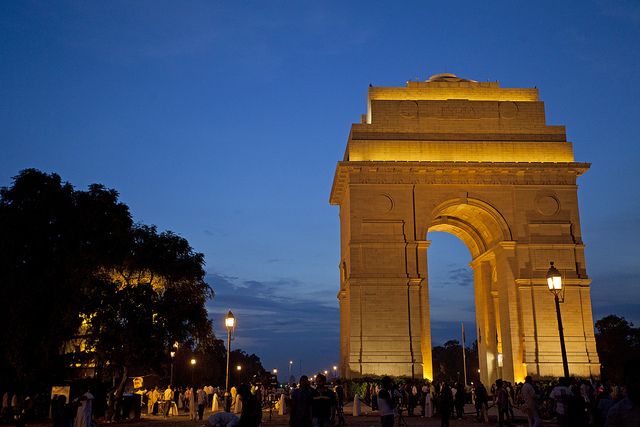
Designed and built primarily as a war memorial in memory of Indian soldiers who laid down their lives, fighting alongside Britain during the First World War and the Third Anglo-Afghan War, the India Gate today is one of the major icons of India’s national capital.
Drafted by the renowned architect Sir Edwards Lutyens, India Gate is a beautiful light-colored brick structure with a centralized arch that is now used as a memorial of the soldier unknown and inspires a feeling of patriotism among the locals, who flock to the monument in the evening to unwind.
India Gate stands in the vicinity of some of the other beautiful structures of the colonial era including the President’s House the Secretariats and the Rajpath, which is the erstwhile Kingsway and hosts the famous Republic Day parade every year. Read more
Banke Bihari Temple, Vrindavan

Located in the midst of the Hindu holy city of Vrindavan, the Banke Bihari Temple is a 19th-century temple dedicated to Lord Krishna. The temple’s idol is a unique figure of the Lord, which is said to be bent at three places and is associated with legends that are full of divinity, devotion, and worship. The structure of the temple is based on the beautiful Rajasthani architecture and the main idol is a pleasing marble statue.
At any given time, a number of devotees throng the temple, whose count increases especially during daily invocations to Lord Krishna and a number of festivals and celebrations that are carried out in the temple during the year.
Dwarkadhish Temple
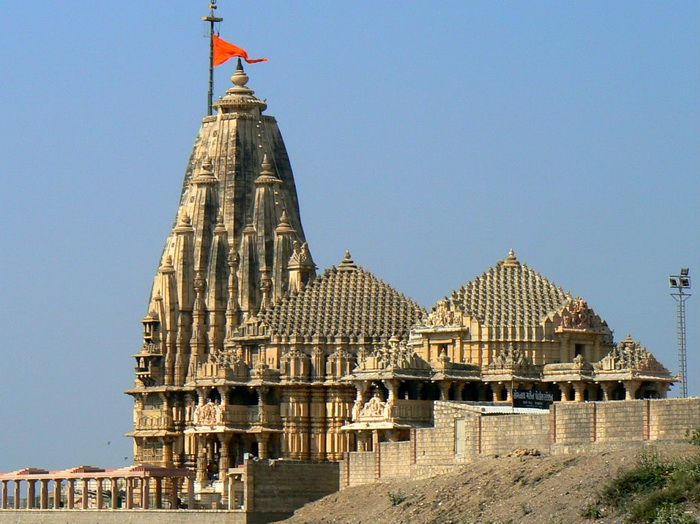
One of the four sites of the sacred pilgrimage considered very holy to the Hindus, The Dwarkadhish Temple is a colossal structure and an icon dedicated to Lord Krishna. The temple, about 2000 to 2500 years old, is located near the tip of India’s shore and is believed to stand at the very place that was the home of the Lord in His capital city of Dwarka.
The amazingly beautiful architecture of the place incorporates about 72 pillars which support the massive 5-story edifice which is reached by a grand flight of 56 steps. The intricately carved temple Shikar (Spire) reaches to a height of about 43 m and is topped by a large flag that is changed several times during the day.
The temple remains buzzed with pilgrims, sounds, incense, and colors that create a wonderful ambiance with a peaceful, holistic experience for the visitors.
City Palace, Udaipur

This expansive palace is a visual wonderland and is one of the many sites frequented by tourists who flock to this place to get a taste of royalty. The many artistic views which include a number of pavilions, terraces, courtyards, corridors, rooms, and hanging gardens are a delight for the guests who are further mesmerized by the beautiful and intricate artwork in a number of sub-palaces, including murals and wall paintings.
The City Palace was built about 400 years ago by different Kings of the Rajput Sisodiya dynasty and is perched on the top of a hill that furnishes a breathtaking panoramic view of the historic city.
Se Cathedral, Goa
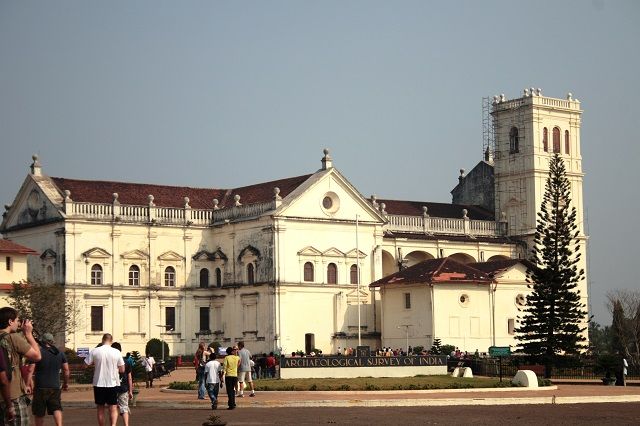
Larger than any other church in Asia, The Se Cathedral is a historic monument and chapel which is dedicated to St. Catherine of Alexandria on whose feast day the Portuguese Alfonso de Albuquerque defeated a Muslim Army that led to the victory over the city of Goa. The Church houses the famous cross upon which many people are said to have had a vision of Jesus Christ as also upon the rock on which it was found.
This cross is now believed to be slowly growing in size. The building also has five large bells, including the famous Golden Bell, known to produce a rich tone, said to have been an inspiration for a Portuguese poem. The Site, though situated in old Goa is regularly visited by foreign tourists and locals alike.
Thiksey Monastery
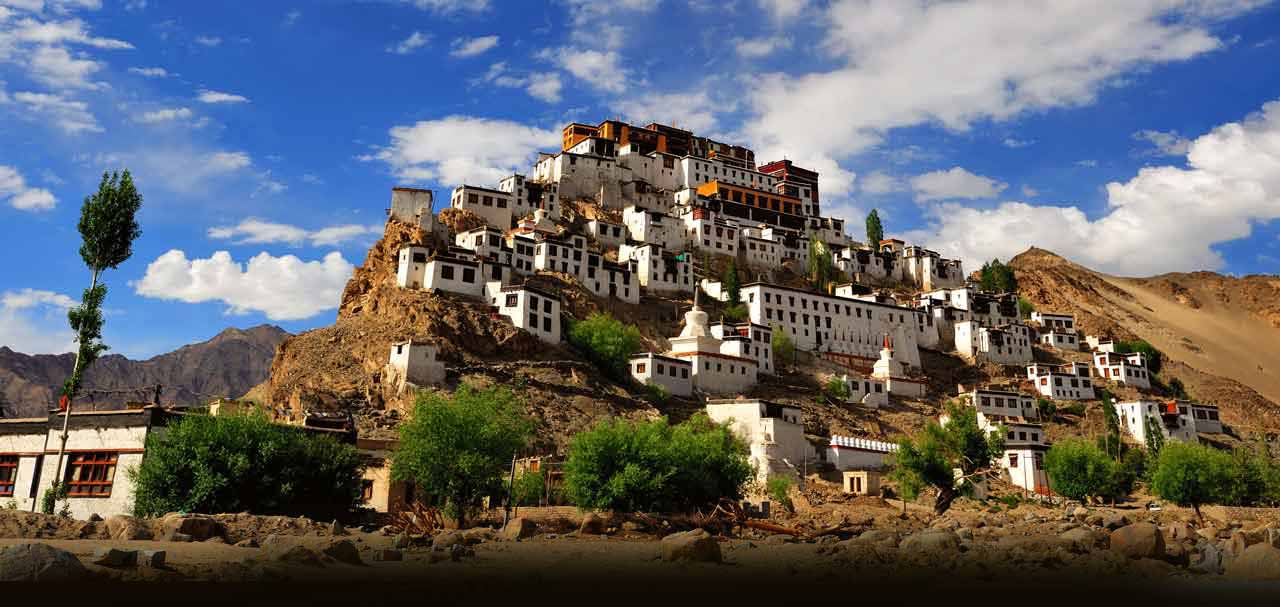
Roosted at an altitude of 3600 m above sea level, this is one of the most beautiful monasteries in the central Ladakh region. The monastery is widely known as the “Mini Potala” as it resembles the original Potala Palace of The Dalai Lama in Tibet.
The structure is a 12 storied building and in all, it has 10 temples, a central assembly hall, and segregated residencies for the monks and the nuns. The highlight of the monastery is a 40-foot-high statue of Maitreya, who is regarded as the future Buddha.
Due to its remote location and sacred atmosphere, many tourists experience divine spiritual bliss. There is a particularly huge gathering during the morning prayers. At this time, one can also see the beautiful Indus valley under the rising sun in all its glory.
Jaisalmer Fort
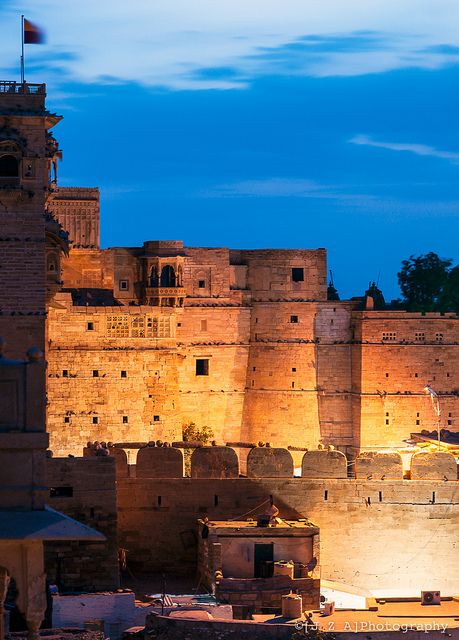
Also known as the Sonar Quila or the Golden Fort, The Jaisalmer Fort is a living urban center that still houses almost all the native population of the city. Elegantly built with yellow sandstone, the fort stands tall amidst the vast expanse of The Great Indian Desert with massive bastions that seem to rise from the ground and diffuse in the muddy hues of its surroundings.
The Jaisalmer Fort, due to its distinct historical significance and cultural importance was selected as a UNESCO world heritage site in the year 2013. Even though situated in an isolated location, it attracts a good number of visitors every year. The fort has a number of eateries that serve a number of different cuisines. The place, although does not have a domestic airport, is otherwise well-connected by road and rail including the luxury train, the Palace on Wheels.
Pattadkal Group of Monuments
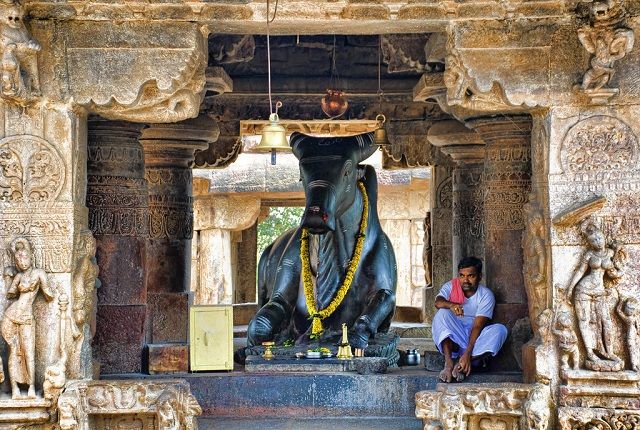
This group of monuments, a series of nine Hindu and Jain temples, is a beautiful proof of an amicable blend of Northern and Southern styles of architecture. Pattadkal used to be the crowning place for the Hindu Chaulakyan Kings between the 7th to 8th centuries. There are in total of 10 temples in this group, out of which four temples are in the Nagara style, and the rest of the six are in the Dravadian style.
The main attraction however is the famous Virupaksha Temple which is the largest and most impressive of all and is endowed with fine sculptures and figures, inscriptions, pillared entrances, and porches. Besides, other buildings are also notable for their fine illustrations and models. The group of icons is now a UNESCO World Heritage site.
Nohkalikai Falls, Cherapunji

Offering one of the most spectacular views, the grandeur of Nohkalikai Falls is breathtakingly majestic. One of the highest falls in India, the water of Nohkalikai falls from a height of 340 meters and hits the ground with a fierce force that is worth a sight.
There is an awesome legend attached to the sight. It is believed that a woman named Likai jumped from this height, mad with grief and anger when her second husband killed her infant child from her first marriage.
The best time to visit Nohkalikai Falls is during the monsoons when the view is most fabulous but visitors can also enjoy the picturesque scene during the months of September and October when the skies get cleared.
Ramanathaswamy Temple, Rameshwaram
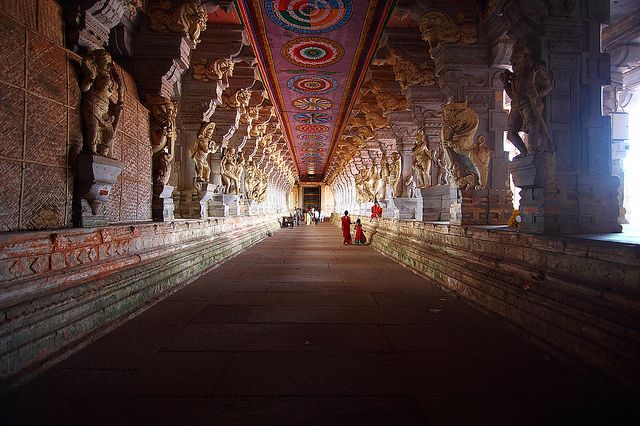
Dedicated to Lord Shiva, the Ramanathaswamy Temple is one of the 12 jyotirlingas, symbolic of the Lord, and is considered to be one of the four holiest sites for the Hindu pilgrimage, Char Dham. Legend has it that Lord Rama sat and prayed at this site to absolve Him of killing a Brahmin in reference to him killing the demon Ravana, who was a Brahmin. There are two lingam structures inside the sanctum. It is believed that one which is made of sand was built by Sita, consort of Rama, and the other was brought by Hanuman, the monkey God.
The temple is a beautiful icon of art and structure. It has one of the largest corridors amongst the Hindu temples in India besides exotic 1000 pillar halls and 22 tanks. Only Hindus are allowed in the inner sanctum of the premises.
Mattancherry Palace, Kochi

Built in the traditional Kerala style architecture, the Mattancherry Palace, is a colossal gift presented to the Raja of Cochin by the Portuguese as a token of goodwill in 1555. The building was subsequently refurbished by the Dutch in 1663, due to which it is also called the Dutch Palace. The palace is distinguished by its quadrangular structure with a central courtyard which has a small temple dedicated to the traditional Goddess of the Royal family.
However, the highlight of the site is a number of murals showcasing Hindu religious traditions from the epics Ramayana and Mahabharata besides a number of portraits of the Rajas of Cochin built after Western style along with a number of regalia belonging to the royalty.
Chilika Lake, Odisha

The second largest brackish lagoon and the largest in Asia, the Chilika Lake is spectacularly pleasing in terms of its amazing biodiversity which is home to a large number of species of plants and animals. Spread over a vast area of 1100 sq. ft, the water mass attracts a large number of tourists with an interest in fishing, bird-watching, and boating.
Chilika Lake also boasts to be the largest wintering ground for migratory birds. Birds as far as from the Aral Sea, the Caspian Sea, Mongolia, central Asia, Ladakh, and the Himalayas have been observed here. The quiet and cool atmosphere, including the phenomenal sunsets, are delightful for the mood of guests who love to come here again and again.
Living Roots Bridges, Meghalaya
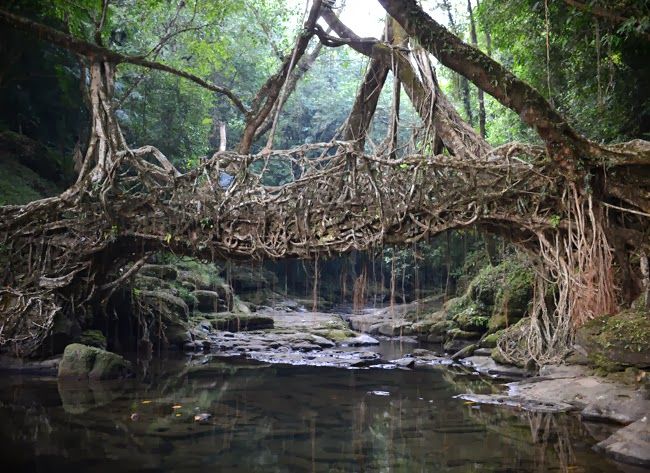
One of the most astonishing sights awaits the tourists in Meghalaya in the form of these extraordinary bridge structures built of the secondary roots of the Ficus elastica tree. These formations are entangled with each other to form suspensions over small streams and are enduring enough to hold about 50 or more people at a time.
Some of these structures are about 100 feet long and may take around 10-12 years to become fully operational. These networks can be found in the villages of Sohra and Mawlynnong, the latter being declared as the cleanest village in Asia in 2003.
Darjeeling Mountain Railways

The famous “toy train” of India, the Darjeeling Mountain Railway journey is a fairytale 78 km ride across hills and small towns and villages between the stations of New Jalpaiguri and Darjeeling. The train furnishes a stunning example of colonial-era engineering and ingenuity when it was built in 1880 as a narrow gauge link from Siliguri to Kurseong.
Passing through beautiful stretches and impressive landscapes, the icon has been the inspiration and basis of some memorable Bollywood songs as well. The toy train is indexed in the UNESCO World Heritage List and remains famous to both tourists and locals alike.
Gandhi Smriti, Delhi
The historic complex is the site of the house where Mahatma Gandhi spent the last days of his life and was assassinated during a prayer meeting on 30th January 1948. It was originally the house of the business tycoon K.K Birla. The mansion was subsequently acquired by the Indian Government in 1971 and was transformed into a national museum in memory of Gandhi.
It now holds many memorabilia of the Father of the nation including paintings, sculptures, photographs, inscriptions, etc. even the fatal three bullets that were fired on him. There is another complex that houses the campus of the International Center for Gandhian Studies and Research, which furnishes the teachings of Gandhi through courses and films. It is one of the most popular attractions for guests arriving in Delhi.
Tawang Monastery
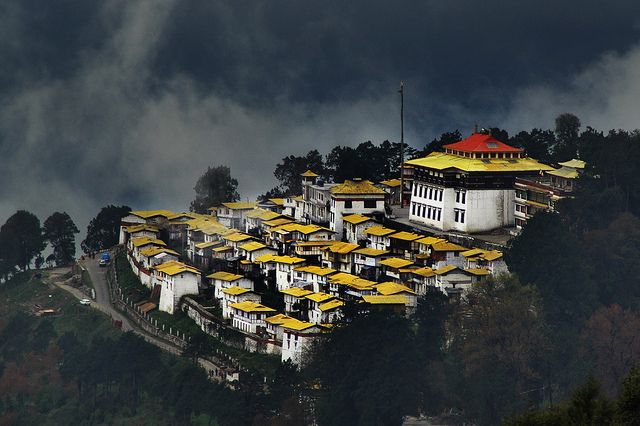
One of the largest monasteries in India and second largest in the world, after the iconic Potala Palace in Lhasa, The Tawang Monastery was built in the year 1680-81 by Merak Lama Gyatso, in accordance with the wishes of the 5th Dalai Lama, Nagawang Lobsang Gyastso. Located at a height of about 10,000 feet, Tawang Monastery is a colossal and awe-inspiring structure and bears a number of murals, paintings, sculptures, carvings, etc along with a large image of Buddha sitting in the lotus position.
The monastery has a number of halls and courts, including the three-storied library, an assembly hall called Dukhang besides various works of art on walls and ceilings. From time to time a number of festivals are organized in the Monastery, including the Choksar( scripture recitation) and Tibetan New Year, on which people assemble in numbers and offer prayers.
Mahabalipuram Group of Monuments
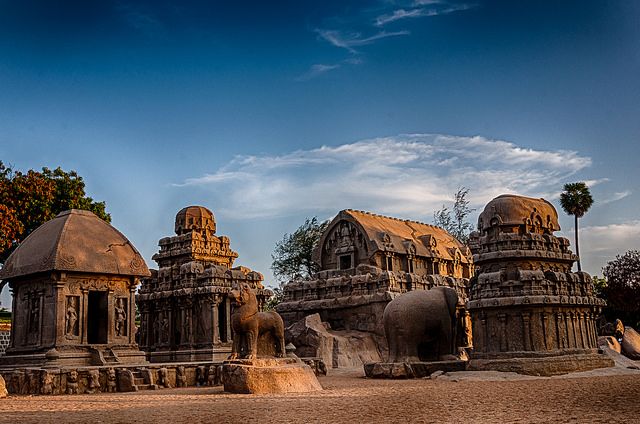
Mahabalipuram Group of Monuments is a whole temple town situated on the Coromandel Coast off the Bay of Bengal, in the Kancheepuram district of Tamil Nadu. Pervaded all around with beautiful art including sculptures as well as architecture, the complex houses about 40 monuments like the Shore Temple, Ratha Temple, Cave sanctuaries, and open-air bas reliefs which are the most popular among them all.
These iconic structures were constructed in the 7th century and showcases the profusion of the Hindu Pallava Art. Apart from being frequented by travelers from around the globe, its historical and architectural importance got them listed as a UNESCO World Heritage site in the year 1984.
Pangong Tso, Ladakh

Popularly known as the enchanted lake, Pangong Tso is one of the most majestic and breathtaking water bodies situated at the height of 4,350 above sea level. An icon of heavenly creation by Nature, its beautiful, azure waters are a sight to behold for anyone who visits the site. Part of the adventure of the place is the fact that the lake stretches into the regions of Tibet, China, and India its 604 km2 spread.
Lying in one of the coldest regions of Ladakh, the lake freezes completely in winter, when it becomes a site for various sporting activities like ice skating and other cultural exercises. The region is currently an army-controlled area and tourists need a permit to visit the site. Despite this Pangong Tso remains fairly popular with travelers.
Nilgiri Mountain Railways

Regarded as one of the steepest train rides in Asia, the Nilgiri Mountain Rails is an amazing experience for travelers who take the journey from Mettupalayam to Ooty in this unique channel. The train passes through some of the most scenic and picturesque regions disclosing the beauty of lush green Nilgiri hills along with some of the most calming and serene towns of Lovedale, Wellington, and Coonoor.
The exclusive highlight of the journey is the unique rack and pinion system on which the train runs enabling the engine to push the train through the difficult climb and correspondingly controlling the cars during descent. The train is a UNESCO World Heritage site, covering a distance of approx. 116 km and passing 16 tunnels in its incredible course.
Mehrangarh Fort, Jodhpur

One of the most sturdy and impregnable forts in India, Mehrangarh stands stiff normal to the city plain at an imposing height of 400 feet above and looks majestic dissolving in the dusty Jodhpur skyline. Along with its magnificent dimensions, the fort has various heroic legends attached to it which are articulated by the construction of “victory gates” Jayapol and Fatehpol, the latter built by Ajit Singh to mark the victory over the Mughals.
The fort now houses a museum that hosts various tokens and insignia of the erstwhile ruling family like the miniatures, costumes, furniture, arms, paintings, palanquins, headgear, etc. The fort has huge ramparts which have preserved the old cannons and also furnish a stunning, breathtaking view of the city of Jodhpur below.
Hampi Group of Monuments, Karnataka
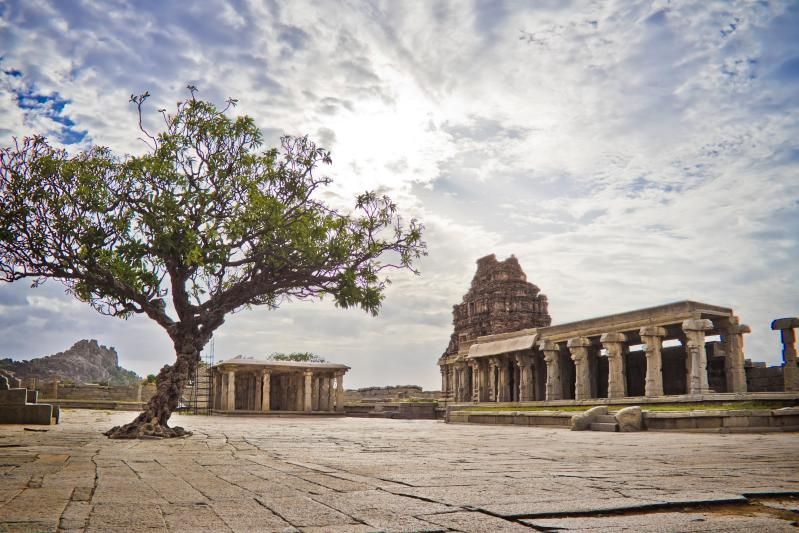
Jaded with a number of beautiful monuments that remind us of a rich, prosperous era, Hampi was one of the most affluent cities of the bygone flourishing Hindu Vijayanagara Empire. The city was once a great center of cotton and spice trade and was hugely admired by travelers from around the world.
The city complex is pervaded by many iconic temples including the temples of Ramachandra and Hazara Rama which are especially popular for their intricate structure, richly carved colonnades, sculpted walls, and figures. Elsewhere the city gives a close glimpse of the sophisticated urban culture in the form of various royal and sacred compounds, shrines, halls, gateways, stables, check posts, etc.
Gwalior Fort, Madhya Pradesh
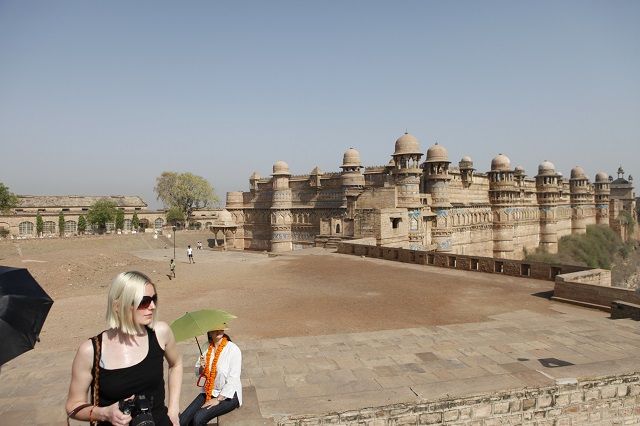
Once regarded to be the most difficult and impenetrable fort in India and considered to be the “pearl among the fortresses in India” by Emperor Babur, the Gwalior Fort spreads out in a vast 3 sq. km area and richly displays the Rajput way of life and architecture. The Fort structure, built by Raja Man Singh Tomar in the 15th century, has a number of charming temples, palaces, and tanks.
Some of the most beautiful buildings in the Fort include the famous Man Singh Palace, Teli-ka-Mandir, Gujari Mahal, Jahangir Mahal, Shah Jahan Mahal etc. Located at a height of about 100m above the city, it offers a wonderful view of the city of Gwalior from its balconies and ramparts and is a frequented site for national and international tourists.
[Browse through our Mysore tour packages]
Mysore Palace

An instance of one of the most beautiful and iconic buildings in India, The Mysore Palace is the official home of the Maharajas of Mysore, who ruled this historic city from 1350 to 1950. The original palace was a wooden structure that was burnt down in 1897. Subsequently, it was rebuilt in the present form in the popular Indo-Saracenic style that has the elements of Hindu, Muslim, British, and Rajput forms of architecture.
The palace is now a museum and contains rich treasures of paintings, jewelry, costumes, and other useful items that were once identified with the affluent lifestyle of the royal family. The building is beautifully decorated and has a number of luxurious rooms, exotic carvings, white marble floors, and walls adorned with some of the most exquisite works of art from around the world. The Mysore Palace, with its popularity, is considered to be the second most visited attraction in India after the Taj Mahal.
[Browse through our Mysore tour packages]
Final words:
India is a crucible of enormously diversified motifs that life has to offer. A mosaic of all the shades, a fabric of millions of threads running crisscross across its face, a continuously living civilization for thousands of years. The Indian subcontinent is home to some of the most beautiful, most stunning, and most remarkable gifts that nature can offer. Its land, its people, and its culture are one of the most variegated, one of the most diversified entities under a single system of law. Such a rich tapestry of life has always attracted a myriad of excursionists from around the globe since time immemorial.
Whether it is the largely Mughal north or the bountiful and expansive South, India is full of thousands of monuments, temples, mosques, churches, and other cultural insignia that have remained a source of pleasure, wonder, and fascination for a backpacker traveling thousands of kilometers to be part of this exuberant heritage.


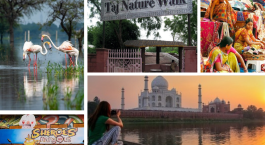
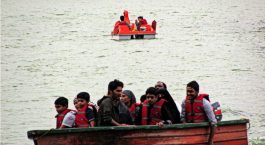

Very interesting, Please share more.
I would love to go to Ladakh and north east. That’s a beautiful place to visit and would love to go there
What about palace on wheels? Well this is not exactly a place but worth a ride when you are visiting india.
Which One is best for Honey Moon Destination in nearby Delhi, Suggest me.
Hi,
You have covered all the best place in your post, amazing articles.
This is really amazing article about the historical places in India. i was visited Mysore Palace last month it is really incredible place to see .
Regards
Linda
Thanks Linda! Do keep coming back for more inspiration! 🙂
All the places are very beautiful .
These spots are awesome.These are truly appealing. I am a financial plan traveller.Can you propose me some best places in Bangalore and Jaipur?
Bangalore and Jaipur pretty contrasting in wide array of aspects. While Jaipur scents with amazing historical and cultural facets, Bangalore (or Bengaluru as is now called) is more modern and is largely characterized as the nerve center of India’s IT. Nevertheless, if you admire India’s age old customs, its history and traditions, Jaipur will have many place to satisfy your interests. Hawa Mahal, Amer Fort, Jantar Mantar and City Palace are particularly appealing while other similar places can add on for a truly exciting historical adventure. In Bangalore, you will admire many of buildings, especially the state buildings like Attara Kacheri, Vidhan Soudha besides Tipu Sultan’s Palace and Bangalore Palace. There are many other places like the Wonderla Amusement Park and the Bangalore Aquarium as well which you can enjoy too. Find out more about things to do in Bangalore here:
https://www.indianholiday.com/blog/top-things-to-do-in-bengaluru/
Enjoy 🙂
Wow, Looks very incredible… Love to visit India.. & really like Indian Culture.. i just want to know how much time it will take to reach every place u mentioned in your list..??
These places are awesome.These are really attractive. I am a budget traveller.Can you suggest me some best places in Bangalore and Jaipur?
Which is the best honeymoon destination in india?
Hey Daphane, It really depends upon several factors and primarily on your interest, the current season and your budget. India is a vast country with a diverse expanse of geography and heritage to serve different moods and interests. For most part, Kerala appears to be a popular choice for its cool and calm atmosphere, offering privacy for the couples in a verdant, natural environment. Besides, there is Goa for a beach holiday and water sport. On the other hand, places in Rajasthan like Jaipur, Jaisalmer etc. are also good for their wonderful heritage and local ambience, while in the North, Manali has been one of the most popular destination for long. However, in recent times, India’s North East is rapidly emerging as sought after destination for couples for their honeymoon vacation. The almost pristine natural beauty, with a lot of opportunity for isolation and privacy coupled with a welcoming and wonderful hosts is ideal for many couples. Hence, you can choose what really suits your own personal need and then decide accordingly. Have a good time. 🙂
@Mayank Chawla
You didn’t mention about Golden Temple in Amritsar.
Regards
Priyanka
Hey Priyanka! I did mention about Golden Temple in the first few entries. 🙂